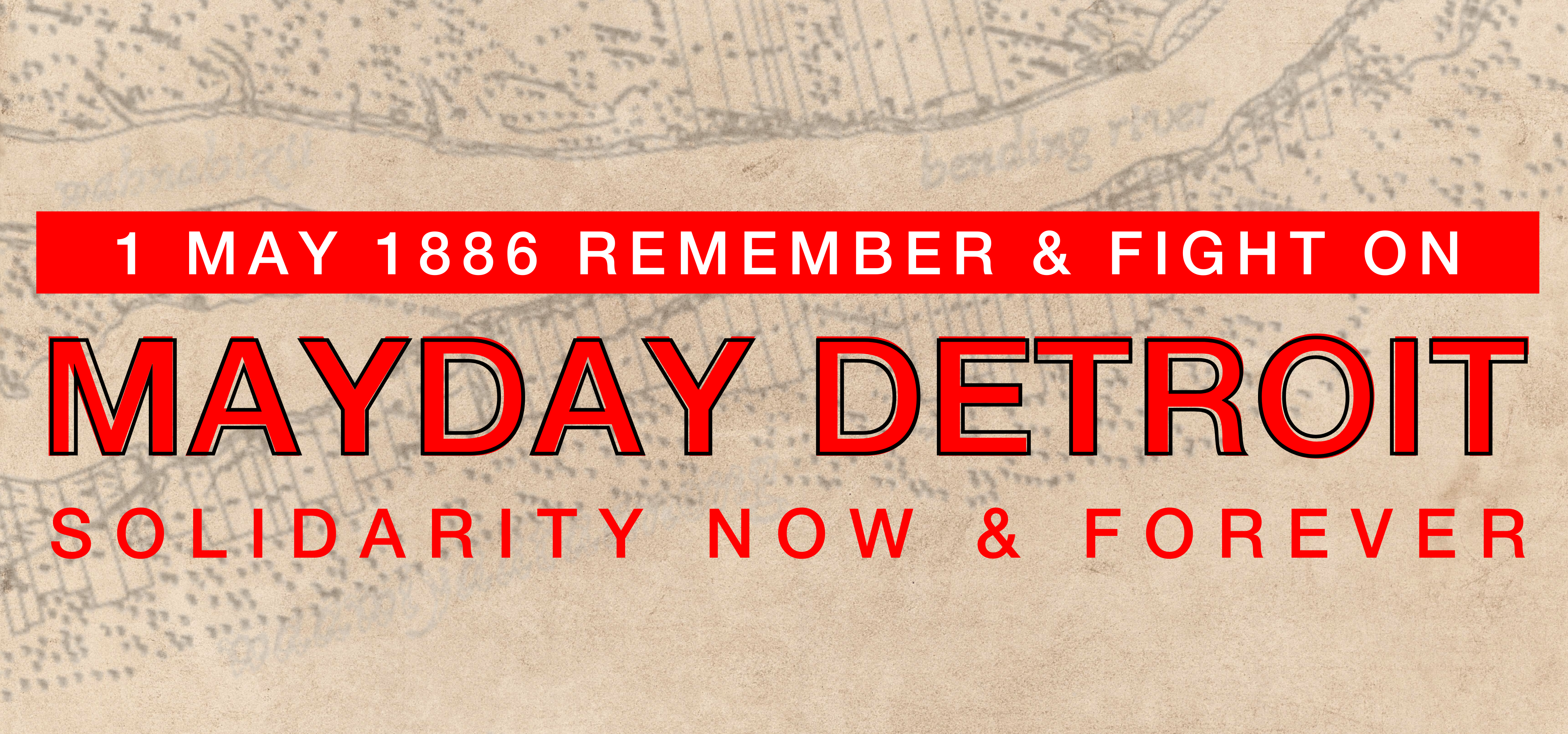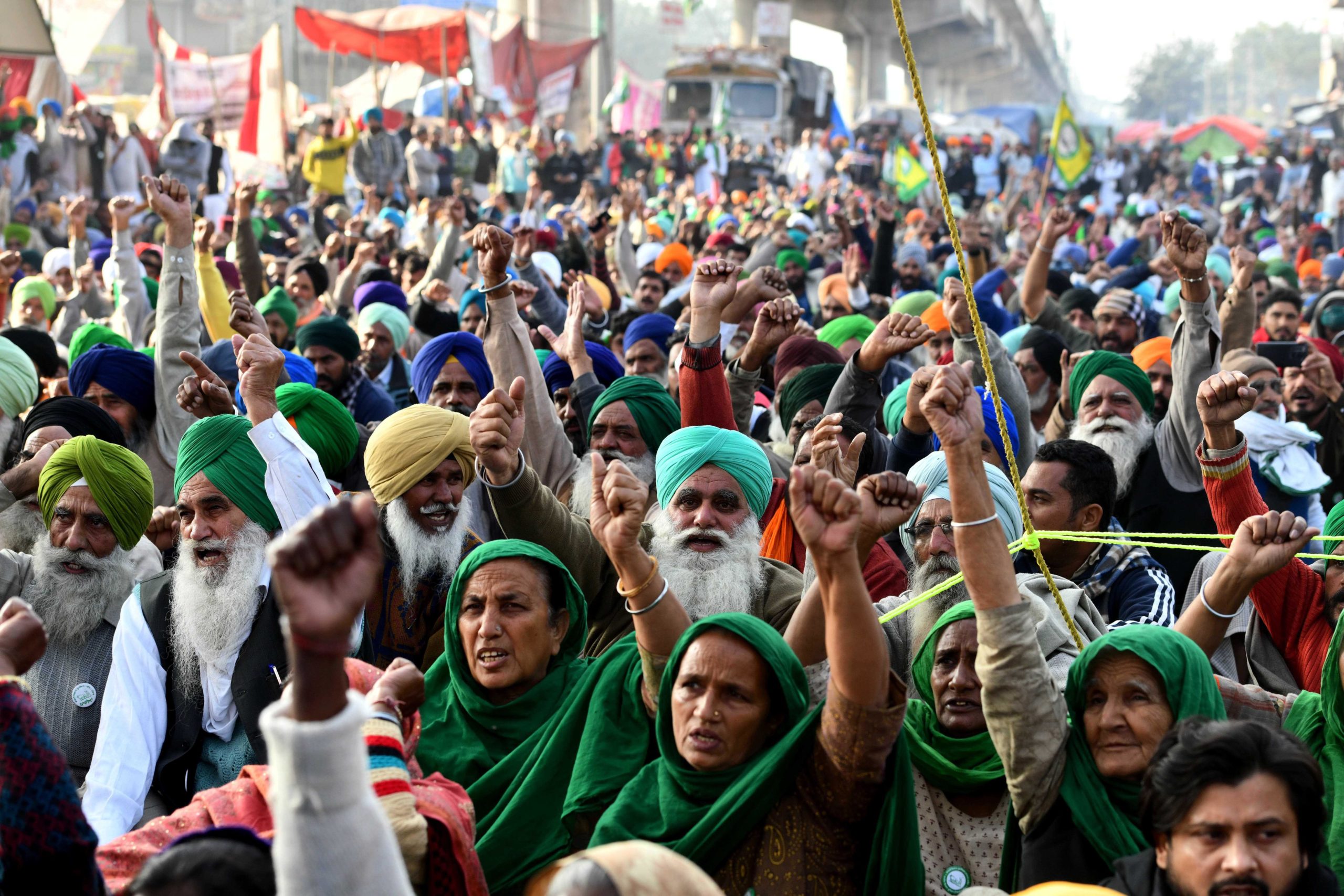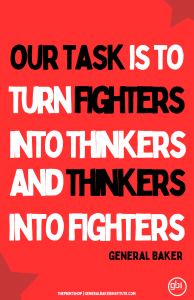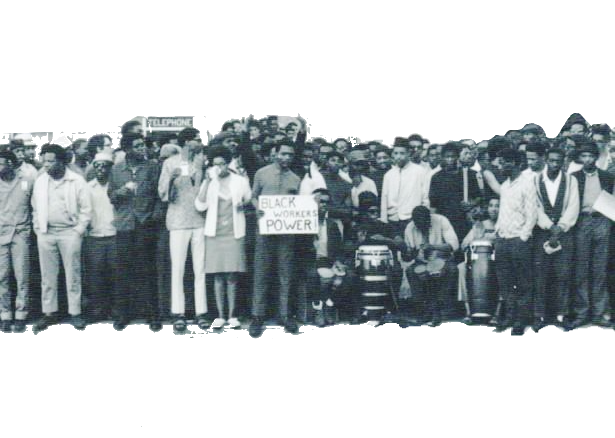
- What is May Day?
- May Day History
- Black Workers at the Center
- Workers’ Future: A Path to Power
May Day, also called Workers’ Day or International Workers’ Day, is a day of commemoration, celebration, and activation of the historic and ongoing struggles and gains made by workers around the world, observed in many countries on May 1st.

Traditionally in Europe, 1 May is the date of the spring festival of May, a celebration of agrarian work and life in the form of rituals celebrating fertility, flowers, and nature.
In 1889, the Marxist International Socialist Congress met in Paris and established the Second International as a successor to the earlier International Workingmen’s Association. They adopted a resolution for a “great international demonstration” in support of working-class demands for the eight-hour day. The 1 May date was chosen by the American Federation of Labor to commemorate a general strike in the United States, which had begun on 1 May 1886 and culminated in the Haymarket affair four days later. The demonstration subsequently became a yearly event. The 1904 Sixth Conference of the Second International, called on “all Social Democratic Party organizations and trade unions of all countries to demonstrate energetically on the First of May for the legal establishment of the eight-hour day, for the class demands of the proletariat, and for universal peace”.
Since then, workers around the world have used May Day as a day to energize our fights and take action against oppressive governments, capitalists, exploitative corporate forces, and other pillars and elements of the extractive state. We uplift the history of this day here in this digital archive to re-inscribe the May Day practice as one which demands action by and for the class of common people and not simply a day for posturing by small groups of activists. Most actions you can imagine are more effective than a day of meaningless gestures, even if the action is only this digital archive and resource for the education of the common person. May Day is a call to sustained action by and for the working class.

May Day — a brief history to 1890
May Day in the U.S. began as a day to win the eight hour day for workers. And we will get to that history of May Day a bit later.
To better understand its significance, we need to first look at the Civil War, fought between the northern states with the federal government and the southern states with the Confederate States of America.
The General Strike
The turning point in that war was the General Strike of the enslaved African-Americans. WEB DuBois explores this subject in Black Reconstruction in America 1860-1880 first published in 1935 at the beginning of the biggest strike wave in US history. He points out that it wasn’t until the general strike, an act of self-liberation, which deprived the southern states of their labor and supplied the northern states with tens of thousands of troops, that the war turned decisively for the North. The North never fought to end slavery and the northern soldiers did not fight for Black people. But objective forces, the clash between the capitalist chattel slave system of the South, a more primitive land-based system based in a capitalist form of slavery, and the capitalist system of the north, a more advanced factory, shop and mill based system of wage-slavery, forced the end of chattel slavery. History is made by people, not by forces, but people constrained to act within the parameters of the world in which they find themselves. It was all that they could do to free themselves, to desert the plantations and move to the oncoming Northern armies.
If anyone wants to know if the US has ever had a general strike, we have, the only one we have ever had, and it was done by the enslaved African-Americans.
The victory of the North, decisively won by the general strike of the African-Americans, paves the way for all workers to struggle against capitalism throughout the country.
The Railroad Strike of 1877
The first great battle of the working class was the 1877 railroad strike. This strike was the first nationwide clash between labor and capital only 12 years after the Civil War ended. In the recession of 1873-77, the biggest capitalists, the railroad tycoons, slashed wages. The strike was foreshadowed when the Pennsylvania railroad made a 10% cut in wages. The workers complained to management through their existing union organizations but with unemployment rates high, the capitalists were confident that they could replace workers easily. They failed to take into account the sentiment of the nation.
Farmers, recently organized into granges of 800,000 small farmers, deeply resented the very high freight rates for their crops of corn and wheat. Scandals had revealed that much of the profits of the railroads went for graft and corruption, very little into the building of the railroads. As Samuel Yellen in American Labor Struggles, 1877-1934 points out, “workers everywhere were sullen because of continued wage-cuts and unemployment, and the railroads, as the employers of the largest number of men, stirred up great ill-will.”
The strikes began small in the East on one rail line, and soon spread throughout the country. The tycoons demanded that governors call out the state militias to force the workers away from their property and allow scab labor to operate the railroads. But local militias were made up of the same people who were striking and they refused to fire on their relatives and neighbors. Governors sent troops from distant places in their states or asked neighboring governors to send their militias. In spite of all these maneuvers, the state militias were unable to quell the strikes. For the first time in US history, federal troops were used to crush workers uprising. More than a hundred workers were killed and several hundred badly wounded. For a full week, the strikes dominated the newspapers.
The strikes were defeated by the full force of military and legal weapons. The workers learned some important lessons — solidarity could be created amongst all workers; the lack of organization was the key reason for the lack of success of the strike; that workers needed independent political action to help keep the government from killing them.
Thus, the several rail unions began to negotiate contracts for their members in addition to their benevolent society tasks; Workingman’s Parties, which later became Socialist Labor Parties sprang up across the country. The battle had just begun.
May Day 1886
The hours worked by workers were very high often reaching 13-14 hours a day. What days you worked and didn’t were controlled completely by the bosses. Wages were very low; children were often forced to work to help feed their families. There were no unemployment benefits.
The 1880s saw the emergence of more and more factories and a great increase in unskilled and semi-skilled labor. The skilled labor organizations were small and conservative, not interested in these workers. Their bargaining power, because of their lack of skills, was nil.
The Knights of Labor, a secret organizations from 1869 through 1881, was open to all workers, both racially and in terms of skill, but it had a conservative leadership. The more militant Federation of Organized Trades and Unions, the forerunner of the American Federation of Labor (AF of L), was much smaller than the Knights with 50,000 members. Nevertheless, it passed a resolution in 1884 calling for the eight hour day from May 1, 1886 and after and recommending to labor organizations throughout this jurisdiction to follow this resolution.
Spurred on by the recession of 1884-1885 and the Knights of Labor boycotts of anti-labor establishments as well as its successful strikes against three Gould railroads in March, 1885, the workers around the country began to join the Knights of Labor. It grew from 989 assemblies with 104,066 members in July of 1885 to 5,892 assemblies with 702,224 workers in July, 1886, with the bulk of them coming after January, 1886. The movement for the eight hour grew.
“As the eight hour movement gained momentum, the leadership of the Knights of Labor tried to suppress it and withdraw from it. The capitalist press denounced the movement for an eight hour day. On March 13, 1886, Terence Powderly, the head of the Knights of Labor, sent a secret circular to the assemblies stating that “no assembly shall strike for the eight hour system on May 1 for such an order, was not and will not be given.”
By March, the growth of the movement had already forced the city councils of Milwaukee and Chicago to grant eight hour days to their municipal workers. By the second week of April, 250,000 workers were involved, nationwide, with 30,000 winning the eight hour day. Eight hour tobacco became popular and songs supporting the eight hour day were written.
By May 1, a truly massive strike wave accompanied occurred. 400,000 to a half a million workers joined the agitation. Significant strikes occurred not only in the big cities but in smaller ones like Duluth, Minnesota and Mobile, Alabama. Chicago had the biggest with 90,000 workers demonstrating — 30,000 to 40,000 were on strike; 45,000 had already won decreased hours. 80,000 workers marched up Michigan Avenue. In Detroit, 10,000 marched. In many cities, Black and white workers marched together. Black newspapers across the country reported that “thus have the Knights of Labor broken down the walls of prejudice.”
On May 1, at least 190,000 workers struck for the eight hour day, with another 150,000 winning it or a reduction in hours by merely threatening to strike. Strikes continued in different cities after May Day. The movement for the eight hour day had a big victory on May 1.
The Haymarket Martyrs
In 1886, there had been a continual struggle at the McCormick Harvester plant in Chicago. A strike followed a February lockout and there was a rally on May 3 where strikers confronted scabs. Police fired into the crowd and killed one worker immediately and injured several others.
This was the attack that was protested at the Haymarket Rally on May 4. The rally at the Haymarket site went by peacefully with the mayor of Chicago present. He sent a message to the local police station saying as much and ordered them home. However, a police provocateur threw a bomb into a police contingent as people were dispersing and killed 1 immediately; 6 died subsequently. Seventy officers were injured, mostly by the bullets of other police firing indiscriminately into the crowd.
Hundreds of workers were arrested in a sweep of neighborhoods. Socialist and anarchist newspapers were closed, their subscription lists used to find and arrest people. The leaders arrested were Parsons, Spies, Fielden, Schwab, Fisher, Engel, Lingg, and Neebe. They had not even been at the rally at the time of the bomb throwing. They were nevertheless charged.
The successes of May Day drove the vicious campaign against the organizers.
All the defendants were charged with murder because the bomb thrower was influenced by their ideas. The trail was a farce of justice. A special bailiff was appointed to select the jury; the judge did not allow the defense to present any defense of their ideas but allowed the prosecution to display all types of weapons and bombs purportedly seized among the hundreds arrested. The judge openly insulted the defendants. The summation by the State Attorney Grinnell said: “Law is on trial. Anarchy is on trial. These men have been selected, picked out by the grand jury and indicted because they are the leaders. They are no more guilty than those thousands who follow them. Gentlemen of the jury; convict these men, make examples of them, hang them and you save our institutions, our society.”
The speeches of the convicted lasted three days as they gave a stirring defense of the workers right to fight the employers. August Spies said: “Your Honor, in addressing this court I speak as the representative of one class to the representative of the other.” He continued saying: “if you think that by hanging us you can stamp out the labor movement . . . the movement from which the downtrodden millions, the millions who toil in want and misery expect salvation — if this is your opinion, then hang us! Here you will tread upon a spark, but there and there, behind you and in front of you, and everywhere, flames blaze up. It is a subterranean fire. You cannot put it out.”
Defense meetings grew across the country and around the globe. The defendants were hung on November 11, 1887. The last words of August Spies are carved on the Haymarket Monument: “There will come a time when our silence will be more powerful than the voices you strangle today!”
May Day goes International
The movement for the eight hour day took two years to regroup. At the AFL convention in 1888, they set May 1, 1890, to enforce the eight-hour day. It is this resolution that reached the founding congress of the Socialist International in Paris in 1889. The congress devoted a large part of its business to discussing May Day and passed a resolution saying:
“A great international demonstration shall be organized for a fixed date in such a manner that the workers in all countries and in all cities shall on a specified day simultaneously address to the public authorities a demand to fix the workday at eight hours and to put into effect the other resolutions of the International Congress in Paris.
“In view of the fact that such a demonstration has already been resolved upon by the American Federation of Labor at its convention of December 1888 in St. Louis for May 1, 1890 that day is accepted as the day for the international demonstration.
“The workers of the various nations shall organize the demonstration in a manner suited to conditions in their country.”
In the US, the AFL decided to carry out the struggle by having different unions strike at different times to achieve the eight-hour day. The results of the 1890 mobilization were staggering. 46,000 carpenters achieved the eight hour day along with thousands of laborers in allied trades. Another 30,000 carpenters won the 9 hour day. According to Bradstreets, more workers struck on May 1, 1890, then any other single day in US history up to that point.
Demonstrations for the eight hour day and universal suffrage were held across the world.
Books used for this essay:
- Black Reconstruction in America, 1860-1880, by WEB DuBois;
- American Labor Struggles, 1877-1934, by Samuel Yellen;
- History of the Labor Movement of the United States, Volume 2;
- From the Founding of the A.F. of L. to the Emergence of American Imperialism, by Philip S. Foner;
- May Day, A Short History of the International Workers’ Holiday 1886-1986, by Philip S. Foner.
Essay written in 2023 by Fred Vitale of Michigan Welfare Rights Organization for East Michigan Environmental Action Council’s MayDay print media
As we pointed out in this essay “A Brief History of May Day”, the struggle for liberation of Black workers is at the center of workers’ struggle against capitalist domination in America.
“The turning point in [the American Civil War] was the General Strike of the enslaved African-Americans. WEB DuBois explores this subject in Black Reconstruction in America 1860-1880 first published in 1935 at the beginning of the biggest strike wave in US history. He points out that it wasn’t until the general strike, an act of self-liberation, which deprived the southern states of their labor and supplied the northern states with tens of thousands of troops, that the war turned decisively for the North. The North never fought to end slavery and the northern soldiers did not fight for Black people. But objective forces, the clash between the capitalist chattel slave system of the South, a more primitive land-based system based in a capitalist form of slavery, and the capitalist system of the north, a more advanced factory, shop and mill based system of wage-slavery, forced the end of chattel slavery. History is made by people, not by forces, but people constrained to act within the parameters of the world in which they find themselves. It was all that they could do to free themselves, to desert the plantations and move to the oncoming Northern armies.
If anyone wants to know if the US has ever had a general strike, we have, the only one we have ever had, and it was done by the enslaved African-Americans.
The victory of the North, decisively won by the general strike of the African-Americans, paves the way for all workers to struggle against capitalism throughout the country.”
The organized struggles of Black workers in cities like Detroit thrust America into a tension that has to be resolved by the transfer of power from capitalists to working class and common people of all colors. This historic model of a general strike continues to point a way forward for workers and common people fighting to transform society from a profit seeking project for the few into a social project of uplift for the many.
General Baker on the Two Labor Days

I think the famous statement goes like this, “those that refuse to study history forfeit their opportunity to learn from experience.”
I think what we want to do here is learn from those historic things. The first Monday of September Labor Day was born in New York City. From the historical records, it indicates that it was a call of Peter McGuire, an Irish American cabinet maker and a leader of The Brotherhood of Carpenters and Joiners in 1882. And in most of the rest of the world, May Day the 1st of May is celebrated as a labor holiday, out of the struggles for the 8-hour day in 1886.


General Baker
Labor Day
September 5, 2004
Detroit MI
Every year, here in Detroit and in cities around the United States, activists move in contested space. The space is a location of ideas and information around the historic points of workers’ struggles. One of these sites is the first of May.
A day of sacred remembering and celebrating, May Day has evolved, from a day for honouring sacrifices into a day on the calendar to highlight political issues of the day. While these issues may at any moment be pressing, the price we pay for a politics of constant urgency and emergency and opportunity is a fading memory. To spread an ever up-to-date awareness of ongoing political struggle, we cede ground to a declining understanding of May Day.
By modern definition, May Day is a celebration of workers’ historic and world-changing struggle for human rights and transformative political power. In actuality, May Day is at once two things: it is a day of reinvigoration and activation grounded in the historic nature of the material victory of workers over some excesses of capitalism by exercising their power, by going on general and coordinated strikes and resisting the predictably violent reactions of capitalists; and, it is also a holiday loosely associated with working class people and left-leaning ideas.
Seeking to stay current and relevant, in a time where being current and relevant matters more and more in the social consciousness, the former and essential May Day fades into the latter, the one which we could easily do without.
We play in contested space, but we often neglect to fully contest the space that is history and what it offers us, as a working class, the class of most people, as a force who is actively making history in every moment.
We do not need a holiday, as much as we require time and space to re-root in the instructive meaning of history, like that of May Day, and the clear lessons it brings us in strategizing freedom yet unwon. We have to educate ourselves and each other on the meaning and history of May Day, to shine an inspiring light on the importance of Black people fighting back against slavery as the ultimate exploitation of labor, the stratification of workers by capitalists, the insistence on unity, and bottom-up organizing, and on the power of labor withheld by workers organized and unwavering.
As workers, as everyday people fighting to build the power to change our economy and our society, we continue to make space for learning about the struggle against exploitation, about classism as the structured domination of non-wealthy people by wealthy elites, the cooptation thereby of some non-wealthy people against the interests of the working class as a whole, the violent reactions of capitalists against working people demanding human dignity, and about the overall devastation that capitalism visits on the masses of people and the planet. In our pride as common people, we tear down the harmful myth of rags-to-riches exceptionalism, where capitalism hides its great failures, by celebrating a few. We celebrate and re-center the victories of the many.
Our miscalculations, up to this point have been symptoms of our deeper problem: a false notion, that a small group of intellectual elites or academics or activists who are ‘in-the-know’ can be so forward thinking that our ideas will make up for a lack of popular support or grounding in the reality of the working class and the common people in our communities. Impractical and performative study, elitism, and political opportunism– all these survive in large part because of our failure to come together and stay together under a clear analysis shaped by and against our most concrete material conditions.
So this is our ultimate commitment, to recover and study the history of our struggle, as a unifying force, to produce and fashion a new weapon: conscious and organised masses of our people, an enlivened army of fighting thinkers and thinking fighters.
May we continue to stay ready at various points of production, economic, social, and political production, to withhold and redirect our assets and our abilities, and direct them only toward the common cause of the liberation of the everyday people, to a society made fully and wholly wealthy by our labor and by our work.
May we stand ready, always, to strike.

Mon – Sat
10.00am – 4.00pm
(except holidays)
phone: (313) 556-1702
Detroit, MI 48201


